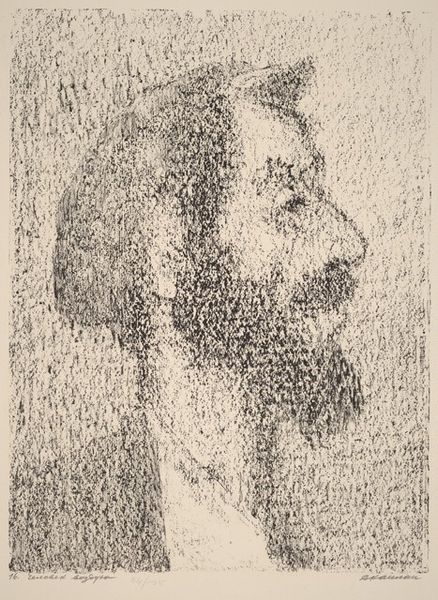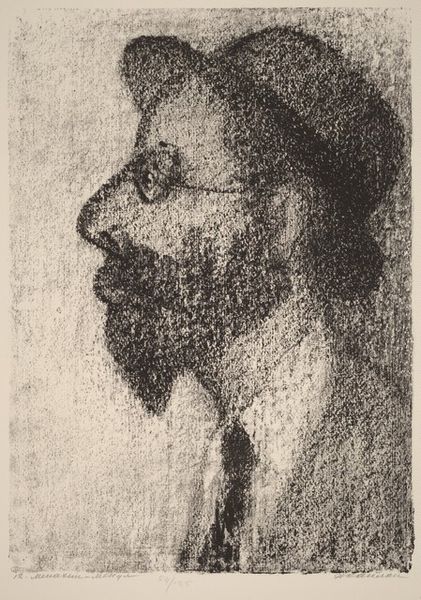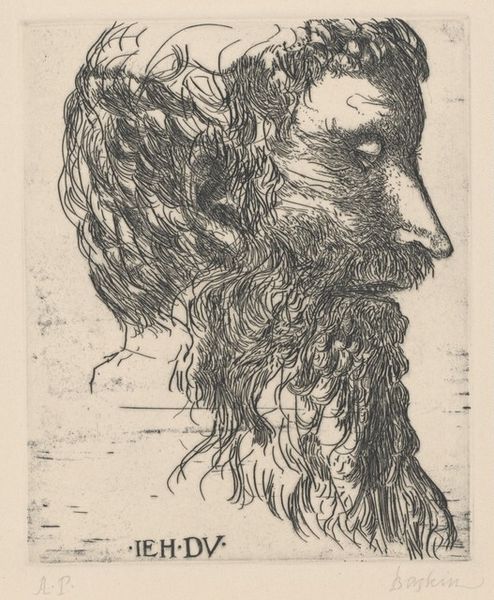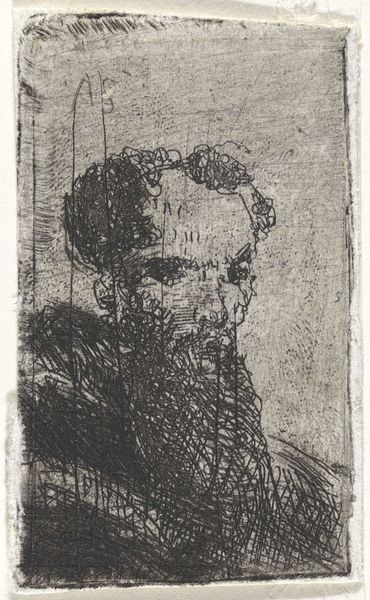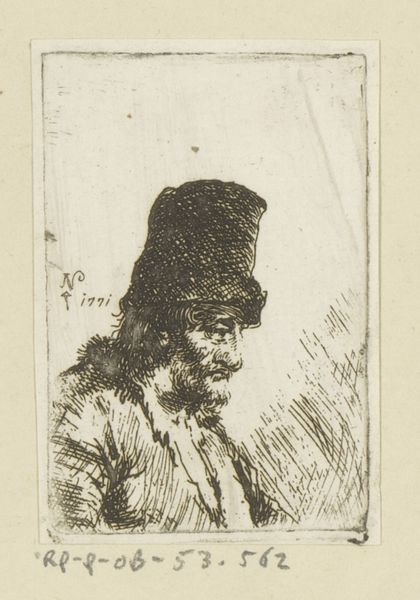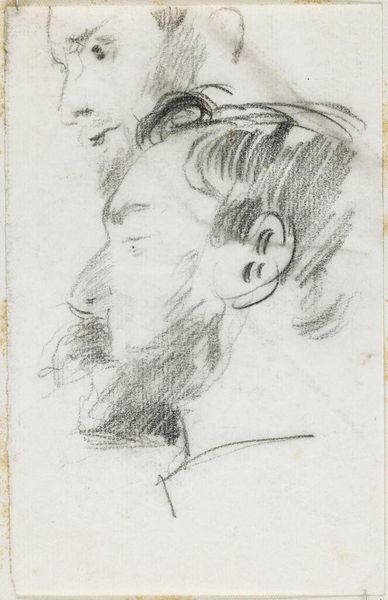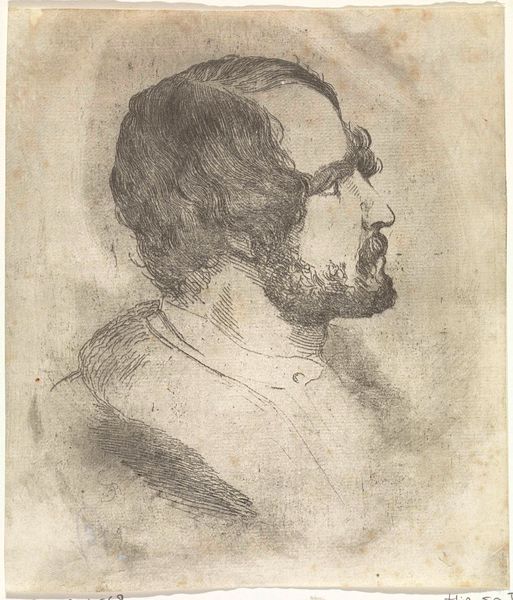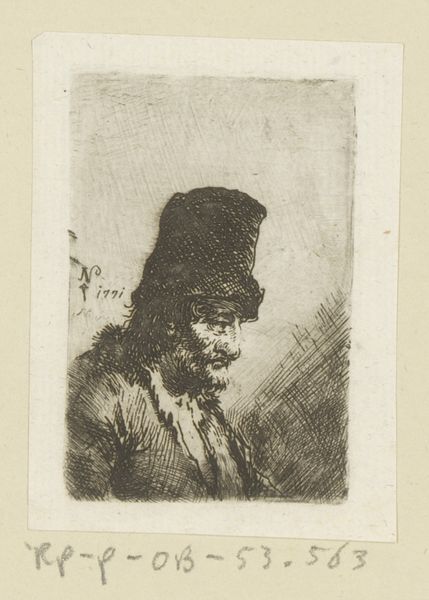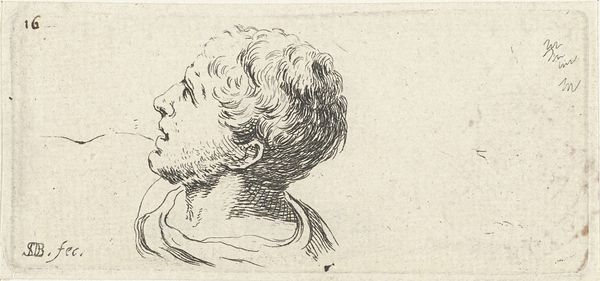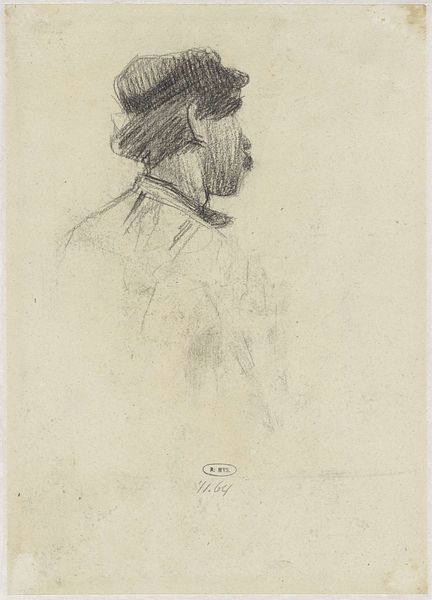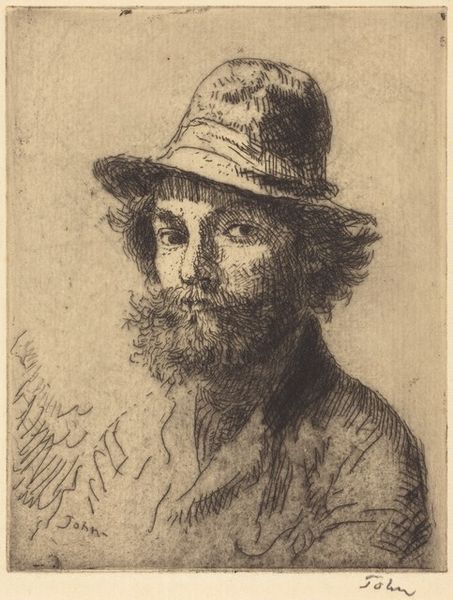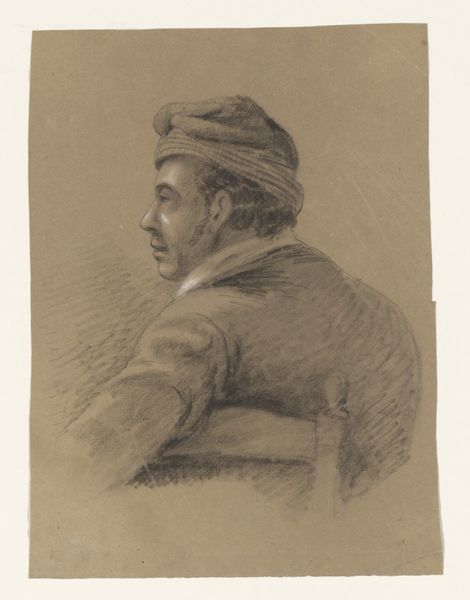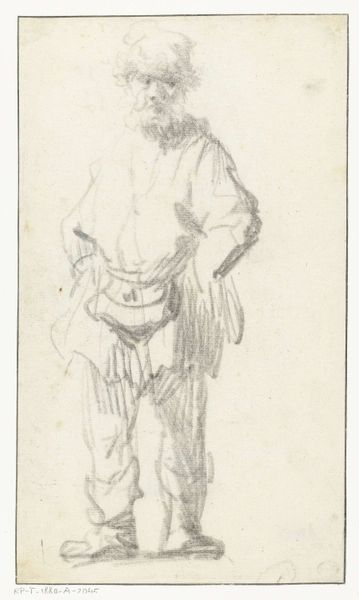
drawing, print, graphite, charcoal
#
portrait
#
pencil drawn
#
drawing
# print
#
pencil sketch
#
charcoal drawing
#
pencil drawing
#
graphite
#
portrait drawing
#
charcoal
Copyright: National Gallery of Art: CC0 1.0
Editor: We're looking at "Portrait of Svat" by Anatoli Kaplan, created sometime between 1957 and 1961. It seems to be a charcoal or graphite drawing. The portrait has this almost haunting quality. How do you interpret this work, given the context of the time it was created? Curator: The “haunting quality” you observe speaks volumes about the artistic environment of that era. Consider that this work emerged from a time of political repression and social constraints in the Soviet Union. The visible struggle within the marks—the almost frenetic quality of the charcoal—suggests a deeper unrest, perhaps a commentary on the limitations placed on individual expression. What do you think the artist is trying to say by portraying Svat in this way? Editor: Perhaps a kind of silent resistance? The rough strokes might reflect the internal turmoil or the harsh realities of the time. It's like the portrait holds a secret. Curator: Exactly! And secrets, especially in authoritarian regimes, become powerful tools. The artist is using portraiture not just to depict a person, but to convey a mood, a sense of confinement, a challenge to dominant narratives. It becomes a form of visual dissidence, a way to give voice to the unspoken experiences of individuals living under oppression. What kind of personal story do you imagine for the sitter in the portrait? Editor: Someone burdened with worry? Perhaps they carry their own secrets, as well? The marks around his eyes hint at weariness. It makes me wonder about all the stories that are not told. Curator: Precisely! And by inviting us to consider those untold stories, Kaplan’s portrait transcends mere representation, becoming a potent symbol of resilience in the face of adversity. Thank you; you've made some incredible observations. Editor: Thanks, I learned a lot. Thinking about art as resistance offers an insightful lens.
Comments
No comments
Be the first to comment and join the conversation on the ultimate creative platform.
